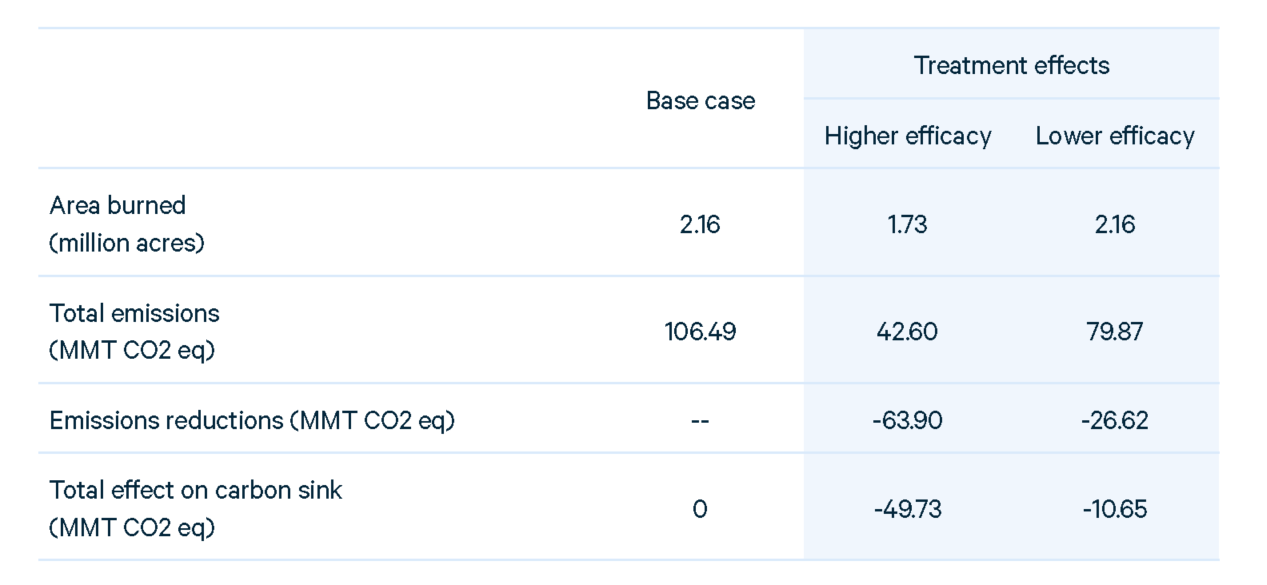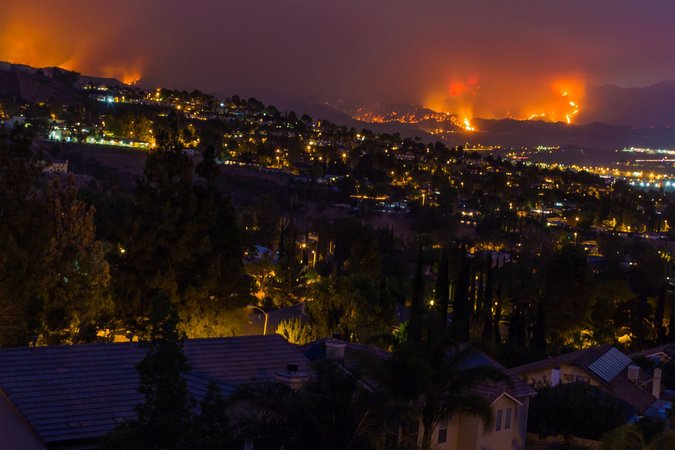Wildfire Risk Reduction: Effects of the Draft Energy Infrastructure Act
This issue brief examines the potential reduction in greenhouse gas emissions resulting from forest fuel treatments on federal land proposed in West Virginia Senator Joe Manchin’s draft Energy Infrastructure Act.
Introduction
This issue brief examines the potential reduction in greenhouse gas emissions resulting from forest fuel treatments on federal land proposed in West Virginia Senator Joe Manchin’s draft Energy Infrastructure Act.
In 2020, 58,950 wildfires burned more than 10 million acres across the United States. Seventy percent of burned acreage was on US federal lands. Fuel treatments can reduce wildfire hazard potential and, if strategically located, lower burned area, fire intensity, loss of life, and damage to structures and other property. Fuel treatment may also reduce greenhouse gas emissions through declines in the extent and intensity of future wildfires which, in burning vegetative biomass, release stored CO2 back into the atmosphere.
In the short run, these treatments remove vegetation and therefore carbon from forests, with some of this carbon stored in forest products. In the long run, carbon storage increases as it shifts to more fire-resistant trees. Reduction in high intensity fires will also reduce fire-induced changes in forest types, which can enhance long run storage of carbon in these forests.
Proposed Action
Section 8003 of the draft Energy Innovation Act proposes that $3.5 billion be appropriated to fund the treatment of 10 million acres of federal land with “very high wildfire hazard potential.” Treatment would target areas located in 1) the wildland-urban interface, and 2) public drinking water source areas.
Results
Our analysis finds that 10 million acres of forest fuel treatments on federal lands, as outlined in the draft Energy Innovation Act, could reduce wildfire greenhouse gas emissions significantly.
Treatment scenarios yield wildfire emissions that range from 43 to 80 million metric tons per year (MMT/yr) and emission reductions that range from 27 to 64 MMT/yr. After accounting for the recapture of some emitted carbon by forests and potential for increased storage in wood products, the net effect on the forest carbon sink is between 11 and 50 MMT/yr with a midpoint estimate of 30 MMT/yr.
Net effects would result from reducing the area of fire but, more importantly, from reducing the intensity of future wildfire in treated landscapes. Estimates of emission impacts account for the structure of the terrestrial carbon cycle.
Primary benefits would be realized in life and property protection, as well as security of drinking water sources. But treatments would also enhance the security of carbon stored in vegetation and reduce overall emissions of carbon dioxide (CO2) and other powerful greenhouse gases from wildfires, specifically nitrous oxides, black carbon, and methane.
According to the EPA’s Greenhouse Gas Inventory Report, the US forest carbon sink has averaged 630 MMT/year, so proposed treatments as outlined in Section 8003 of the draft Energy Innovation Act would increase the annual sink between 2 and 8 percent.
Table 1. Estimates of net change in US forest carbon sink for a range of treatment effects

Appendix
For more detailed analysis, please read the appendix.




